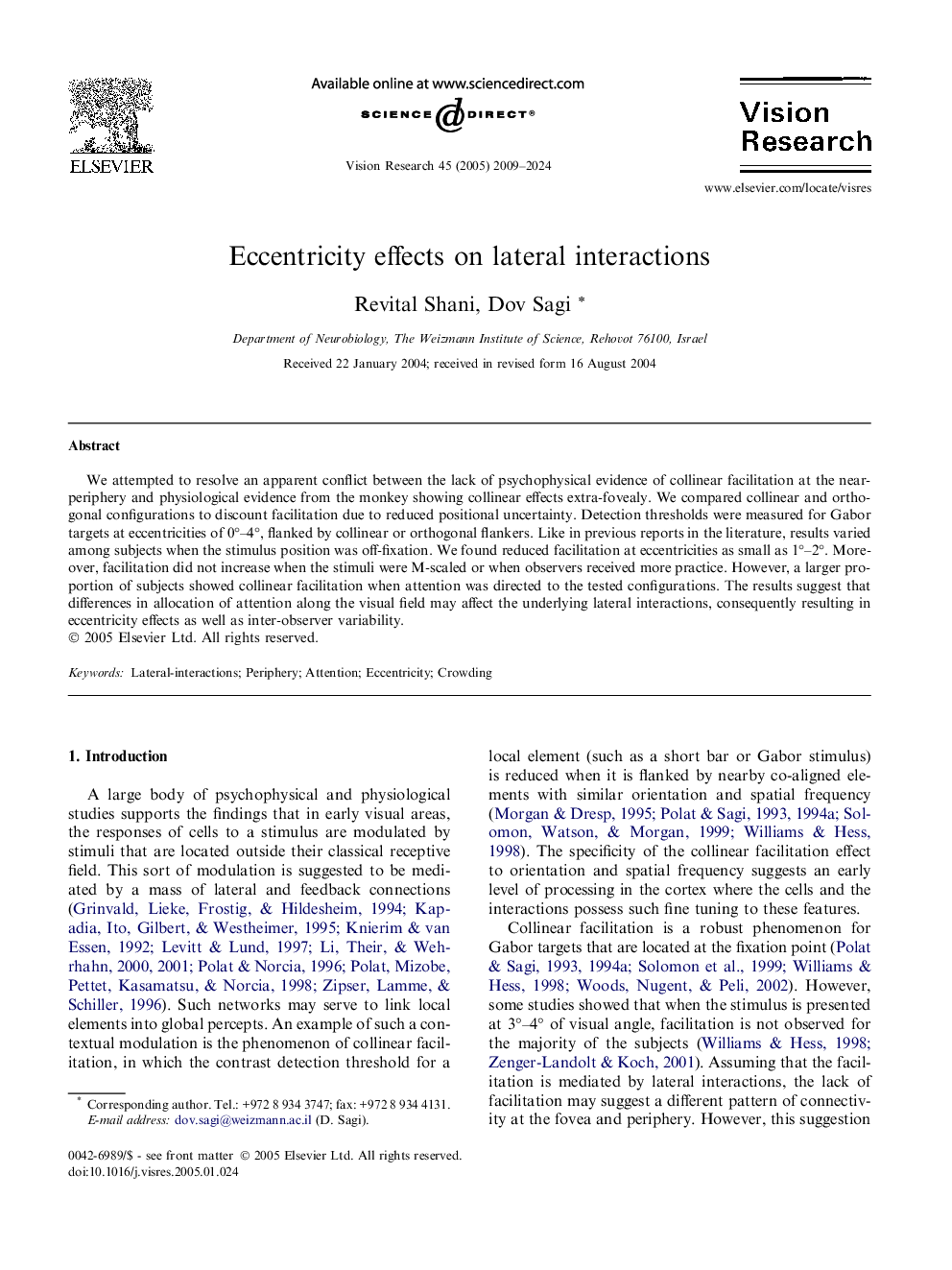| Article ID | Journal | Published Year | Pages | File Type |
|---|---|---|---|---|
| 4036859 | Vision Research | 2009 | 16 Pages |
We attempted to resolve an apparent conflict between the lack of psychophysical evidence of collinear facilitation at the near-periphery and physiological evidence from the monkey showing collinear effects extra-fovealy. We compared collinear and orthogonal configurations to discount facilitation due to reduced positional uncertainty. Detection thresholds were measured for Gabor targets at eccentricities of 0°–4°, flanked by collinear or orthogonal flankers. Like in previous reports in the literature, results varied among subjects when the stimulus position was off-fixation. We found reduced facilitation at eccentricities as small as 1°–2°. Moreover, facilitation did not increase when the stimuli were M-scaled or when observers received more practice. However, a larger proportion of subjects showed collinear facilitation when attention was directed to the tested configurations. The results suggest that differences in allocation of attention along the visual field may affect the underlying lateral interactions, consequently resulting in eccentricity effects as well as inter-observer variability.
